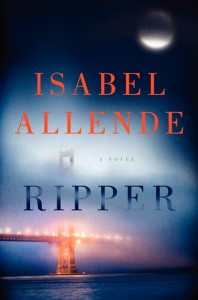 Source: Public Library
Source: Public Library
Hardcover, 224 pgs.
I am an Amazon Affiliate
The Life-Changing Magic of Tidying Up by Marie Kondō, translated by Cathy Hirano, provides a step-by-step process for her KonMari Method of tidying, which she says should bring you joy and possibly lead to other life-changing moments. The first step is to discard, and when she says discard, she means get rid of everything that does not bring you joy or has no use. Discarding should be undertaken by category of items not by room, as many homes stash lotions and hair clips and other items in multiple rooms. These may sound like daunting tasks, but if the entire household participates, it might take less time. She says the entire process for tidying the house can take up to six months or more. Crazy!
Sentimental items like letters from loved ones and photos should be kept for last, because these will be the hardest items to part with and sort through. All of our clothes should be collected from the various places throughout the house — drawers, closets, linen closets, coat closets, etc. — and placed in piles sorted by tops, bottoms, coats, dresses, etc. Once they are sorted, you should hold them in your hands, and think about whether they bring joy when you wear them. They also should be examined for any wear that cannot be repaired and tossed if they cannot be repaired. This is just one example. Placing everything in one category into a pile on the floor ensures that you visually see how much stuff you have. I recently did this with clothes on my own and felt much better once everything was sorted and discarded, but I did this without the help of this book. Once everything that is to be kept is identified, it needs to be put into its place and when used, it must be put back into its rightful place.
Kondō’s method is very detailed and deliberate. Each item is held to ensure that the person understands what the item is, what its purpose is, and whether it brings joy. Some clothes, for example, looked great in the store but not on you when they got home — so these should be discarded. One piece of advice about lounge wear and that women should wear elegant nightwear to bed struck me as an old-fashioned idea, given that I’ve always found those kinds of bedtime wear uncomfortable to sleep in. But I may be out of the norm on that one, preferring my t-shirts and shorts or t-shirts and flannel pj bottoms.
While readers will see the points she is trying to make — and it may just be the translation — there are times when the book is too repetitive, which can become bothersome. Also, there is a mindfulness here that may not translate into American culture like it does in Japanese culture. Thanking items for serving their purpose, caressing items to ensure they are alive before you take them out of storage, that kind of thing might appear a bit wacky to some.
The Life-Changing Magic of Tidying Up by Marie Kondō, translated by Cathy Hirano, has some great ideas about what papers should be saved, how clothes should be folded to maximize space, and how to rethink about the items we keep. Attachment is something Buddhists talk about letting go of, and in many ways, Kondō is suggesting something similar in they way she focuses on discarding items.
About the Author:


 About the Author:
About the Author:



 About the Author:
About the Author:

 About the Author:
About the Author:
 About the Author:
About the Author:



 About the Author:
About the Author:



